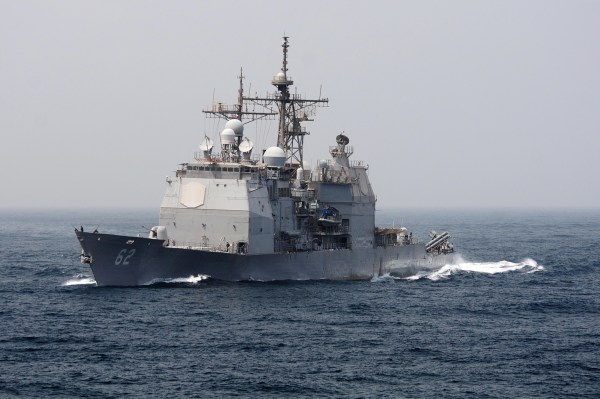This Drone Can Fly, Swim, Drive, and Hop Its Way Through a Mission
- 11.11.13
- 6:30 AM
The future of military drones isn’t surveillance and dropping bombs. It’s transformation: a single unmanned vehicle that can fly, swim, drive, and even hop like a frog across a variety of terrains and obstacles.
Conceived by the Intelligent Systems, Robotics and Cybernetics unit at Sandia National Laboratories, the “Multi-Modal Vehicle Concept” would travel land, sea, and air by transforming itself to accommodate different terrains. Its wings become fins as it dives into water, or underwater paddles that shed casings to reveal wheels as it moves toward land — wheels with the ability to jump 30 feet into the air. An entire campaign could be conducted by a remote operator or, more likely, semi-autonomously.
As it stands now, carrying out a similar mission would require coordinating a team of unmanned aerial, undersea, and ground vehicles made by different manufacturers with different communications systems. It would take careful planning to make sure all vehicles are in place at the right time. But Sandia says that because the Multi-Modal Vehicle is designed modularly and works off one interface, it won’t be subject to those same hang-ups, and that it can adapt mid-mission as conditions change.
“The real value added [of the Multi-Modal Vehicle] is that it allows maximum flexibility in highly complex missions without the concern over whether or not all of the vehicles are positioned just right,” said Jon Salton, a Sandia engineer working on the project.
Sandia has such high aspirations for the Multi-Modal Vehicle that they say it might eventually be able to carry out missions usually reserved for Special Operations forces.
“[Multi-Modal Vehicle] should be at least be able to substantially enhance the capabilities of Special Ops,” said Salton.
Thus far, Sandia has built and conducted limited testing on conceptual hardware, designating it a “mature concept.” Next on the list is to secure funding for the prototype and approach industry partners to turn the concept into reality.
Multi-Modal Vehicle does have its limitations. Because it sheds parts and material as it transforms from one mode to another, recovery is almost impossible — making every mission an expensive one-way trip.
‘We reject illegal killings’: Germany suspends drone purchase
rt.com
November 15, 2013
November 15, 2013
Berlin has suspended the purchase of armed drones on the grounds that it “categorically rejects illegal killings.” This follows a report by Amnesty International that accused Merkel’s government of aiding the US with drone strikes in Pakistan.
A draft agreement between the Social Democrats and the Conservatives obtained by Der Spiegel condemns the use of drones for targeted attacks.
“We categorically reject illegal killings by drones. Germany will support the use of unmanned weapons systems for the purposes of international disarmament and arms control,” said the statement. The government says that before acquiring the remote-controlled craft, it must thoroughly examine “all associated civil and constitutional guidelines and ethical questions.”
'They're trying to figure out what happened': Malfunctioning drone hits Navy ship

Getty Images
This US Navy handout image shows the Ticonderoga-class guided-missile cruiser USS Chancellorsville (CG 62) underway on July 6, 2011 in the Arabian Sea.
A small fire erupted and two sailors were injured after an aerial target drone malfunctioned and struck a guided missile cruiser during training off Southern California on Saturday.
The drone struck the USS Chancellorsville on the side, leaving a 2- to 3-foot hole, said Lt. Lenaya Rotklein of the U.S. Third Fleet.
"They're trying to figure out what happened," she said, adding, "It's certainly rare."
The accident happened Saturday afternoon while the ship was testing its combat weapons system off Point Mugu. The drone was being used to test the ship's radar, Rotklein said.
The two sailors are being treated for minor burns, Rotklein said. The ship was heading back to Naval Base San Diego so officials can assess the damage.
The Navy was investigating the cause of the drone malfunction.
An estimated 300 sailors were aboard the missile cruiser at the time of the incident.


No comments:
Post a Comment